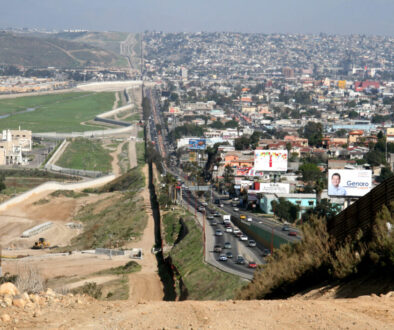Immigration facts
 By Adina Moloman
By Adina Moloman
Source: New York Times
The latest statistics are showing a significant drop in the number of migrants illegally crossing the border with Mexico. The decrease in illegal crossers —down to about 340,000 migrants apprehended in 2011 from a peak of 1.1 million in 2005 registered across all Border States with Mexico. At Tijuana Border in the 1990’s it was registered 600,000 cases of migrants attempted to cross the border illegally, comparing to less that 20 percent, the cases registered in the last three years.
Different measures had to do with this, but also it is an economic circumstance (the economic crises) and perhaps all the pressure and the attention on this issue when different Border States are trying to impose their own state immigration low above the federal low.
The measures to prevent illegal immigrants consists in allocated a huge budget to build fences, the expansion of the Border Patrol to more than 21,000 agents, the highest number in its history, investment on new technology (remote video surveillance systems and seven unmanned drones), etc.
Even when this drop is significant the Arizona State has been the epicenter for crossings by illegal immigrants and gets all the federal attention when this state decided to pass its own immigration State low. This issue was presented in a previous article a few months ago. So far the Arizona Immigration Low (SB1070) has been detained mostly because controlling immigration is a federal responsibility.
The situation is tense and stronger punishments are getting the persons who repeatedly re-entered United States illegally, it was registered cases when they get 10-year term in Arizona.
The consequences of approving this low are not desirable for the illegal immigrants because they won’t be having access to most public benefits education or health care, when schools and hospitals t will be forced to ask for proof of citizenship. Other consequences: the impossibility from obtaining any state licenses, including those for marriage; landlords would be forced to evict immigrant families; drivers to be proved illegal would face 30 days in jail and forfeit the vehicle to the state.
Sixteen States around the nation of them sided with Arizona, while 11 supported the federal government. Arizona’s immigration law has inspired similar lows and measures in Georgia, Alabama, Indiana, South Carolina and Utah.
In various occasions since 2010 this low was dismissed but the final ruling is expected this June and in the opinion of experts may be a split decision between federals and state authorities.





